Vine Diseases: [Characteristics, Detection and Effects]
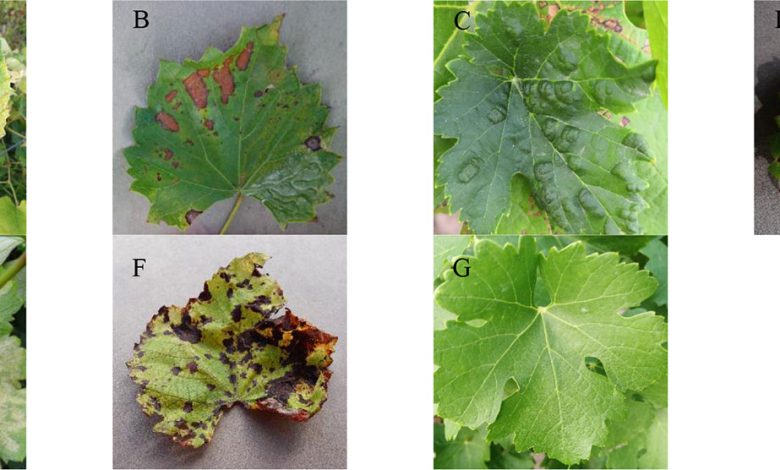
The vine is one of the plants with the highest level of delicacy in the face of the onslaught of diseases and that means that growers must be very vigilant.
 They can be produced by fungi, bacteria and viruses and their treatment will vary depending on the particular conditions of each disease.
They can be produced by fungi, bacteria and viruses and their treatment will vary depending on the particular conditions of each disease.
If you have a vine among your crops or you plan to plant it and you want to be aware of what may affect it, pay attention because here we tell you everything.
vine downy mildew
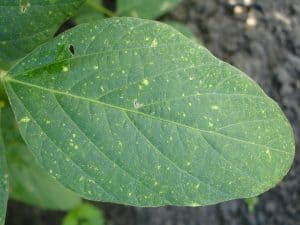 It is one of the most distressing diseases that affect the vine and owes its origin to a fungus known as Plasmopara Vitícola.
It is one of the most distressing diseases that affect the vine and owes its origin to a fungus known as Plasmopara Vitícola.
The harmful effect is generated on the green parts of the plant. That is to say on the leaves of main form.
Its presence increases greatly when there are warm climates but there is also a high level of humidity.
To detect it, it will be necessary to assess the characteristics of the leaves, which will be seen with a kind of oily substance on the visible part. However, on the underside, what will be visible is a white powder produced by the fungus.
What happens next is that the plant begins to degenerate little by little, observing the following changes:
- Necrosis can occur on leaves with oily spots that will eventually cause them to fall off.
- The shoots will be born with deformations.
- The fruits are affected by the white powder on top or changing their color as if they had rot.
The good news is that the disease can be attacked with fungicides and have positive results, as long as it is in its early stages. Hence, it is key to assess the state of the leaves and act as soon as the oily stains are noticed.
powdery mildew
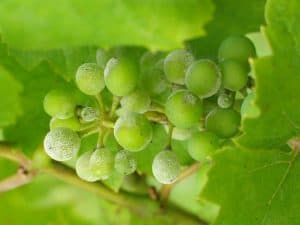 It is also a very common disease in the vineyard and that operates in different types of fruit trees.It is also generated by a fungus and can affect all parts of the plant.
It is also a very common disease in the vineyard and that operates in different types of fruit trees.It is also generated by a fungus and can affect all parts of the plant.
The preferred time to develop is with more or less high temperatures (25º C) and it also needs good humidity.
That is why it is so important to protect plants from excess watering and, above all, from waterlogging. To detect it, it is necessary to pay close attention to any changes that occur in the structure of the plant. So we have:
- On the leaves there is usually a white or brown powder that can be located both on the front and on the underside.
- The buds appear a much darker shade of green that can progress to black.
- A white powder appears on the fruits that tends to cause the skin of the grapes to crack and the quality of the harvest is lost.
This disease has the characteristic of being endemic, so the characteristics of the land and all stages of production should be assessed if it is present. The treatment includes a disinfection process through the use of fungicides.
gray rot
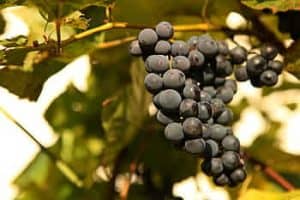 It is a disease caused by a fungus known as botrytis that is also capable of attacking other types of species.
It is a disease caused by a fungus known as botrytis that is also capable of attacking other types of species.
It can affect the entire structure of the plant, but the most unfortunate and evident damage occurs on the fruits.
Botrytis does not have a specific cause for entering the plant, since it can occur through excessive humidity but also through a wound.
The rot is evident with the naked eye because it causes a change in color, mainly in the shoots that turn brown. This color variation turns black and generates the total death of the area.
Leaves can also be affected to some degree with small spots on the leaves, usually towards the tips. For its part, the fruits are usually seen with a dust coating that sooner or later rots them, quickly losing the entire crop.
Since it is transmitted by spores, it is easy for more than one plant to be affected in the same period if it exists.
anthracnose
It is another of the diseases that occurs in fruit trees and the vine is no exception. It is produced by a fungus that adheres to the wood and has the ability to hibernate, waking up again the next spring.
Unlike the previous diseases, what it needs most to present itself is humidity. Although it has a preference for heat, it is not decisive.
The main symptom is generated on the leaves that start with a spot whose edges are brown. After that, the part of the leaf that remains in the center of the spot turns pale and dries, creating different dead zones throughout the structure.
The leaves do not fall, so it is often confused with the presence of insects, making it much more dangerous. The last phase of the disease attacks the berries in which gray spots are generated that cause the skin to detach.
A well-cared-for vineyard should not cause major headaches for its growers, as long as it is kept very well supervised.
Bibliography and references
- Pearson, RC; Goheen, A. C. (1994). Vine pests and diseases. Mundi-Press. Madrid Spain.
- Ruiz Castro, Aurelio. (1965). Vine pests and diseases. National Institute of Agronomic Research. Madrid Spain.
- Monis, Judith; Constable, Fiona; Habili, Nuredin. (2010). Advances in the study of grapevine diseases caused by viruses. Oenology Magazine. Reproduced from: http://juditmonis.com/Espanol/icvg-2009-spanish-revista-enologia.pdf
- Polakof, Ana Clara. (2011). Terms and their variants at the beginning of Uruguayan viticulture: the case of vine diseases. Language and Speech. University of the Andes. Merida-Venezuela. Reproduced from: http://www.redalyc.org/articulo.oa?id=511951371003

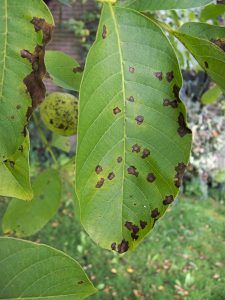
![Photo of How to Prune an Avocado Tree: [Guide on Avocado Tree Pruning]](https://www.complete-gardening.com/wp-content/uploads/2022/08/how-to-prune-an-avocado-tree-guide-on-avocado-tree-pruning-390x220.jpg)
![Photo of Transplant Basil: [Conditions, Time, Tools and Land Preparation]](https://www.complete-gardening.com/wp-content/uploads/2022/08/transplant-basil-conditions-time-tools-and-land-preparation-390x220.png)

![Photo of Lippia Nodiflora: [Characteristics, Cultivation, Care and Disadvantages]](https://www.complete-gardening.com/wp-content/uploads/2022/08/lippia-nodiflora-characteristics-cultivation-care-and-disadvantages-390x220.jpg)